“I’m always considerate when it comes to noise and neighbours. It all started when a neighbour in Dublin started chopping down our front door with an axe…” Berlin-based producer Brendan Gregoriy shows us around his studio.
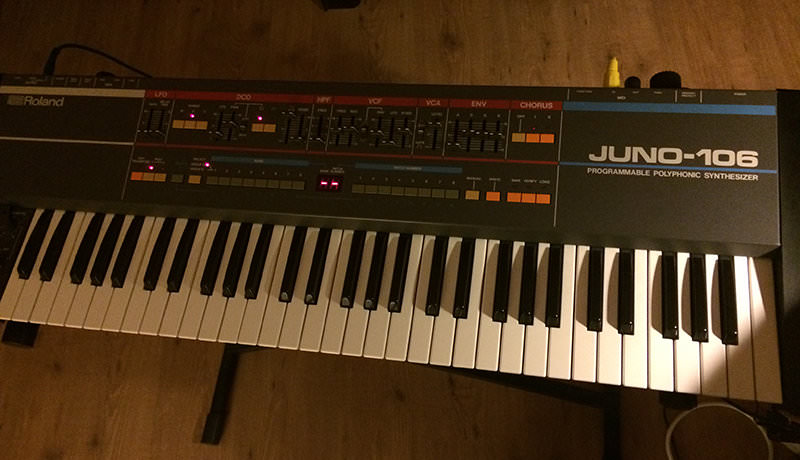
Roland Juno-106
I bought this for 300 euros in Japan just a few years ago. I think they are going for close to 1,000 euros these days here in Berlin. It actually sat in its case for a year under my bed before I hooked it up and then kicked myself for not doing it sooner. I use it mainly for pads and long textural sections. One of my favourite features of this synth (and also the JP-08) is the manual patch – the patch that you get when you power on the unit – basically the exact sound that corresponds directly to the position of every slider on the unit. The cool thing is if you are doing some deep editing on another patch, moving a few of the sliders around, then the next day you turn it on and it defaults to the manual patch and you suddenly have an amazing sound which came seemingly out of nowhere.
Hear it on ‘Fathoms’:
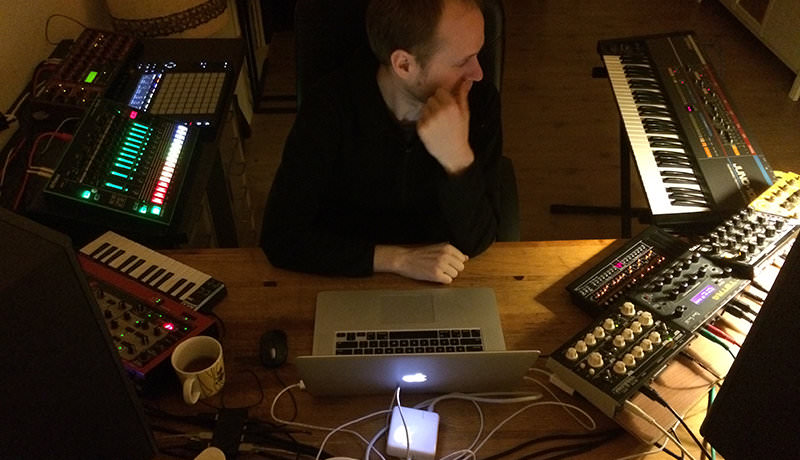


My Studio – Chymera
This is my studio, located in my living room in Berlin.
It took me a while to find the best placement for the studio. I started off on the far wall, close to the window, which was aesthetically the best placement but unfortunately had terrible sound and echoes. As this room also doubles as our living room, I wasn’t allowed to treat the walls, but with the current placement in the middle and a combination of my girlfriend’s clothing collection, records, CDs, books and various bits of furniture, the sound is actually not bad at all – no major echoing or resonances like I’ve had in past studio environments.
Hardware has been a big part of my sound for the last 10 years. I build tracks quickly, and I like to tweak filters and envelopes continually while making a track to get a feel for how it could potentially sound. I like to have everything at arm’s length. I use almost all of my synths in every track, along with a few trusted VSTs when necessary.
I make music every day on the monitors until about 7 or 8 pm, when I have dinner. If I’m making music later than that I use my headphones. These days I’m always considerate when it comes to noise and neighbours. It all started when a previous neighbour of mine in Dublin, in a fit of rage, actually started chopping down our front door with an axe and was miraculously apprehended by an armed Garda team who just happened to be driving past the house at that exact moment… The Chymera story could have been a lot shorter if he had succeeded.
Related
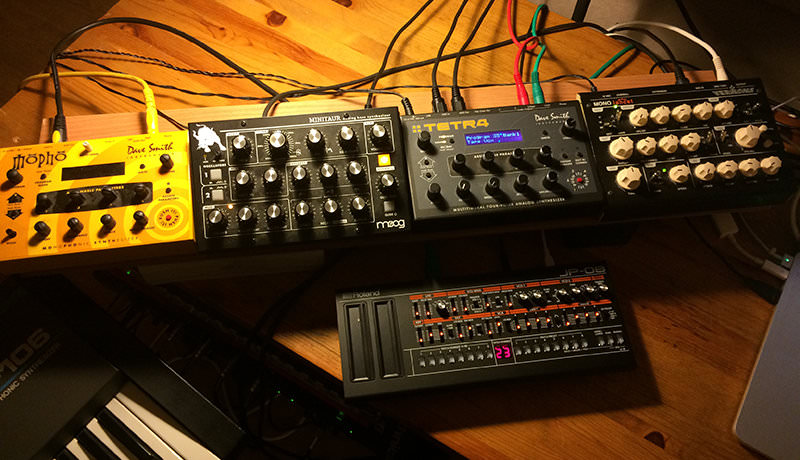


Mini Desktop Synth Section
This is my mini desktop synth section which I have mounted on a board at arm’s length for easy access. Left to right, I’ve got a DSI Mopho, Moog Minitaur, DSI Tetra and Vermona Mono Lancet. Underneath is the new Roland JP-08. I like mini synths because they are usually cheap, and they are portable too, which means I can try them out in my live set as well.
The Mopho has a really gritty sound which I like, though you really need to use the software editor to get the most out of it. I used it mainly for bass on a lot of tracks circa 2009-2012 like ‘Rumours of My Demise’ and ‘Pump’. It’s powered off at the moment because I lost its adaptor (read: it’s somewhere in my room, I just don’t know where) and need to swap it from the Tetra and back again to use it. Although I don’t use it that much anymore, it doesn’t take up any space so I won’t sell it probably.
I bought the Minitaur from a friend in 2012 and it’s made the bassline in pretty much every track since. It’s so rich and deep sounding, and such great value too. It just makes everything sound warm and full. The build quality is beautiful, I love the feel of the pots. I guess the only limitation is the fact that it only goes as high as C4 – it’s made for bass only. Plus you can’t jump the oscillators in octaves like on the Vermona, which is really handy for quickly dialling in the right sound. You can hear it on the bass in ‘Moot Point’, ‘Other Worlds’, ‘The Divided Self’, etc.
The Tetra also comes with me when I play live. Slightly better build quality than the Mopho, but also not so easy to edit. At least I can assign parameters to the four infinity encoders and tweak stuff live. I don’t use it all the time, but when I do, it really makes a difference. It’s a lovely sound that is distinct from my other synths, and like the Mopho, the modulation possibilities mean that you can also get some really wild sounds out of it if you want. This was the single most expensive synth I’ve purchased – everything I’ve bought has been budget or second hand. You can hear it on my upcoming release for Cocoon records this summer.
Once I got the Vermona Mono Lancet, I pretty much stopped using the Mopho. The sheer ease of editing on the lancet trumps it. Everything is on the front panel, what you see is what you get. And it can be surprisingly versatile – from rich moog-like basses, to expressive lead lines. It’s got it all, and finds its way onto virtually every track that I make. You can hear it in my new release for Ovum on ‘Canavan Calling’ – it’s the constantly pitching whine in the background. Also you can hear it as the main buzzing synth in ‘Tidal’. I bring this for my live sets too – everything is hands on, and it just sounds great in the club.
I recently added the Roland JP-08 to my setup. First impressions are very good. I’d been itching to add another polyphonic synth to my setup for a while. This one brings a whole different character than any other poly I have. And for the money, which is frankly peanuts, it’s the best sounding virtual analogue I’ve used in its price range. There are a few complaints; the sliders are lilliputian, its MIDI timing is slightly sluggish, and the resonance tends to digitally clip when pushed too high. But these are small complaints. If you see one, don’t hesitate! I’m really enjoying the sounds from it… suitably gritty and musically inspiring.
Related



Roland Juno-106
I bought this for 300 euros in Japan just a few years ago. I think they are going for close to 1,000 euros these days here in Berlin. It actually sat in its case for a year under my bed before I hooked it up and then kicked myself for not doing it sooner. I use it mainly for pads and long textural sections. One of my favourite features of this synth (and also the JP-08) is the manual patch – the patch that you get when you power on the unit – basically the exact sound that corresponds directly to the position of every slider on the unit. The cool thing is if you are doing some deep editing on another patch, moving a few of the sliders around, then the next day you turn it on and it defaults to the manual patch and you suddenly have an amazing sound which came seemingly out of nowhere.
Hear it on ‘Fathoms’:



My Studio – Chymera
This is my studio, located in my living room in Berlin.
It took me a while to find the best placement for the studio. I started off on the far wall, close to the window, which was aesthetically the best placement but unfortunately had terrible sound and echoes. As this room also doubles as our living room, I wasn’t allowed to treat the walls, but with the current placement in the middle and a combination of my girlfriend’s clothing collection, records, CDs, books and various bits of furniture, the sound is actually not bad at all – no major echoing or resonances like I’ve had in past studio environments.
Hardware has been a big part of my sound for the last 10 years. I build tracks quickly, and I like to tweak filters and envelopes continually while making a track to get a feel for how it could potentially sound. I like to have everything at arm’s length. I use almost all of my synths in every track, along with a few trusted VSTs when necessary.
I make music every day on the monitors until about 7 or 8 pm, when I have dinner. If I’m making music later than that I use my headphones. These days I’m always considerate when it comes to noise and neighbours. It all started when a previous neighbour of mine in Dublin, in a fit of rage, actually started chopping down our front door with an axe and was miraculously apprehended by an armed Garda team who just happened to be driving past the house at that exact moment… The Chymera story could have been a lot shorter if he had succeeded.
Related
Related
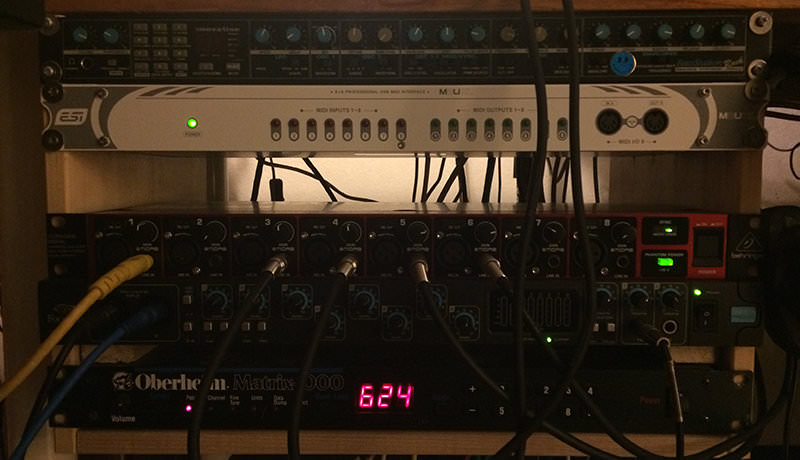


Rack
Underneath the desk is the ‘rack’… Being the thriftmonger that I am, I made it myself from wooden slats. From the bottom up:
The Oberheim Matrix 1000 was very first hardware synth I ever bought, back in 2004 I think. And what a beauty. Obviously it’s impossible to edit on the synth itself. For years I would either just use the presets out of the box, or sample in a C-note of a patch and use it in Ableton’s sampler. I’ve got a software editor for it which is pretty woeful but does the job. Very soon I’m about to get a hardware controller for it, I’m thinking probably this one. This machine has been my go-to pad merchant since the early days – the pads on ‘Arabesque’ and ‘Valerian’ were made from this.
I’ve had the Focusrite Saffire Pro 40 for a couple of years. I love being able to route all my hardware straight into their own channels in Ableton. It allows me to record live takes of my tracks and record all the external synths to their own channels in one pass. I recently doubled my inputs with the addition of the Behringer Ultragain, which connects via ADAT and works seamlessly with the Pro 40. No complaints here really; they both do their job just right.
The ESI M8UXL is my main MIDI interface. When I bought it, I went for the cheapest solution on Thomann. It’s rock solid and never gives me any trouble, but is one of those studio purchases that you don’t lust after, but you just need to have. You can add it to the cables and stands category. Speaking of cables, they are like the socks of the gear world – they always seem to go missing and I can never find them when I need them, no matter how many I buy.
The Novation Bass Station Rack is quite an under-rated synth, although I haven’t even turned it on in the last three years – the Vermona and Minitaur fulfil all my dual oscillator monosynthular needs. But I’m keeping it as it has a Midi-to-CV convertor which may prove useful in the future.
Related
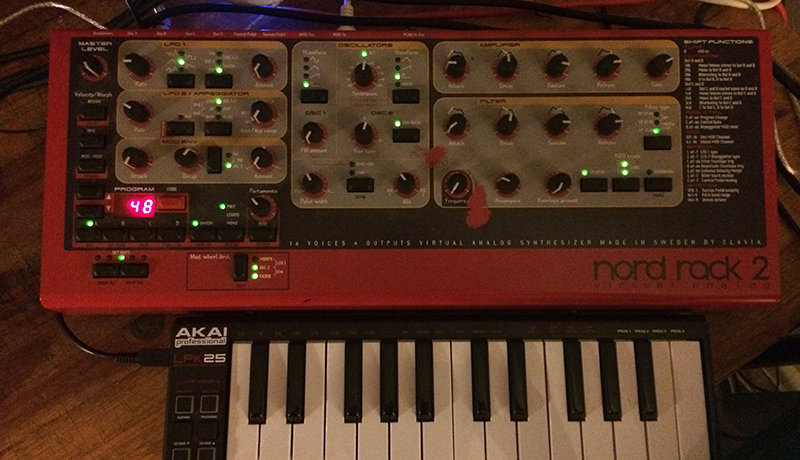


Nord Rack 2
I bought this second hand about 10 years ago. It’s my go-to polysynth. It’s got such a distinctive sound, it is really the best virtual analogue synth I’ve ever used. You can get some really warm, fuzzy and very analogue-sounding textures out of it if you need to. I love the envelopes and the filter – they are super snappy. At the same time, there are periods where it’s just too Nord-y, and I need to let it sit out for a couple of months. It’s definitely quite a marmite-y synth among my friends. They either love it or hate it. You can hear this on the constantly filtering synth on ‘Moot Point’, and the lead melody in ‘Caprica Burning’ too.
The Akai LPK25 is a tiny lightweight mini-keyboard. I use it infrequently. Not such a fan of the key action but it does the job.
Related
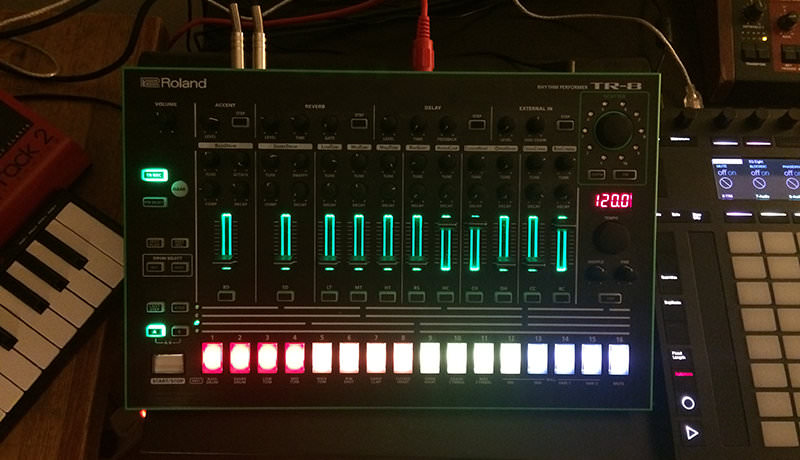


Roland TR-8
I love the actual process of programming the drum patterns and jamming with it, but I’m still a little on the fence about the sound. I’m saving it for potential use in my live set.
Related
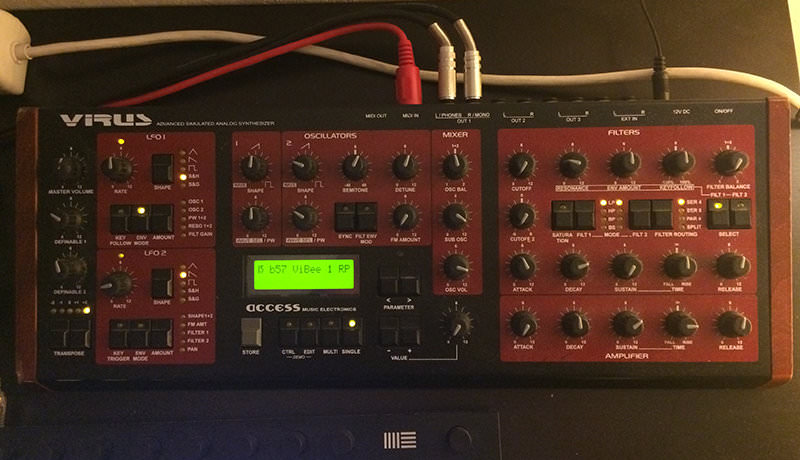


Access Virus
This was the core of both my studio and live set from about 2005 until 2009 or so. The main synths in all my early tracks like ‘Arabesque’, ‘Wish’, ‘Hundulu’, etc, all came from this. I think the built-in delay is one of my favourite delay sounds of all time. I also love the built in arpeggiator – ‘Wish’, for instance, would be nothing without it. There are two assignable knobs and I had a particular breakthrough when I assigned the pitch of oscillator 2 to one of them and started tweaking it live. You can hear the sound of this in full effect on tracks like ‘Under The Slip’ and ‘Fierenix’.
However, I really feel like I used it to its full potential. It’s done a lot of hard work, been dropped a few times and now is sitting out the rest of its days in a pleasant retirement home. Even though I rarely use it anymore, I would never sell it. It’s super useful if I want to remake one of my earlier tracks for my live set, plus we’ve been through too many great experiences together.
Related
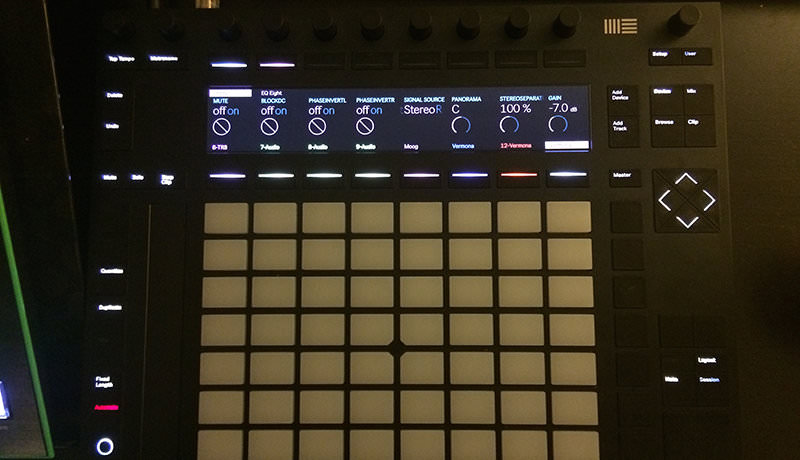


Ableton Push 2
Ableton has been my sole DAW since version 4. I know it inside out, and probably couldn’t live without it, considering I make all my music with it and play live with it too. Push 2 is the second incarnation of their in-house controller. It’s dead handy for throwing stuff down really quickly. In general though I only use it sometimes for playing stuff in in key or inputting a drum pattern quickly. It’s a big improvement on Push 1, but I still find myself browsing devices and presets with the mouse instead. I would love to use it live but it’s just too big and heavy to bring.
Related
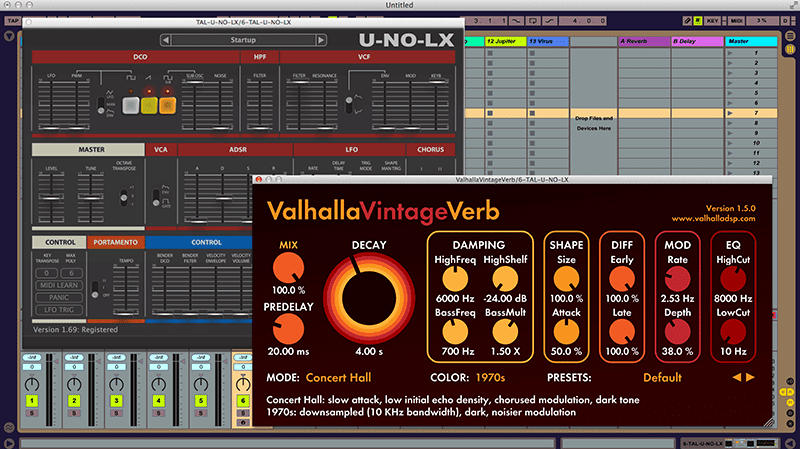


Assorted VSTs
TAL 101 and Uno LX, Valhalla VintageVerb and Shimmer, NI Monark, and Korg Polysix.
Apart from Ableton’s built-in effects, I like to stick to this small and simple set of VSTs for the bulk of my software-based needs. The TAL line is simply superb – they have a bunch of free plugins which are better than a lot of commercial synths from other companies. But I definitely recommend buying both of these. The 101 and Uno-LX are clones of the Roland SH-101 and Juno-60 respectively.
Valhalla makes superb effects, and these are my go-to reverbs in almost every track.
I was lucky enough to be able to use a real Minimoog D last year when I took part in Studio Stekker week in Utrecht. The NI Monark is a clone and a damn good one I must say… They absolutely nailed it.
I’ve been using the Korg Polysix plugin for years and years. After the TAL UNO LX it’s my favourite software polysynth. I’ve never used a real one, though – maybe I don’t want to as I’m sure it’s probably a pale imitation but, nevertheless, I really like it.
Related
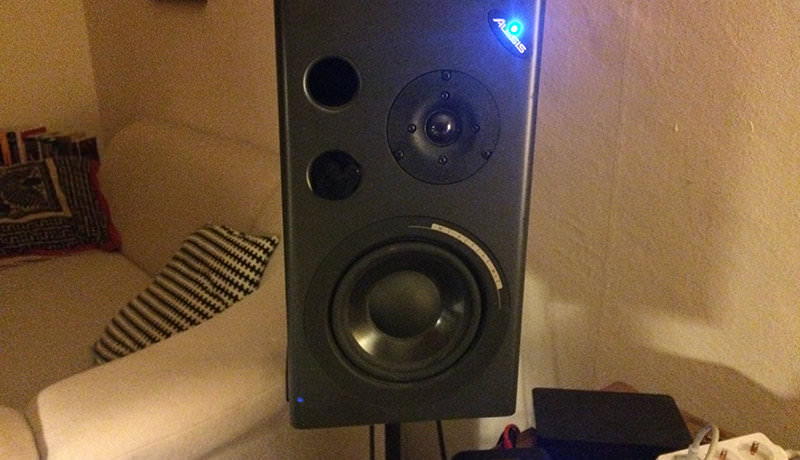


Alesis Monitor One MKII
I’ve used these monitors since 2003. I guess it’s what you’re used to. I am definitely upgrading very soon though. I’m struggling with certain aspects of my mixdowns and I feel it’s time that I invest in some more reliable monitoring options. That said, they’ve served me exceptionally well and for the price they are a steal.
Related
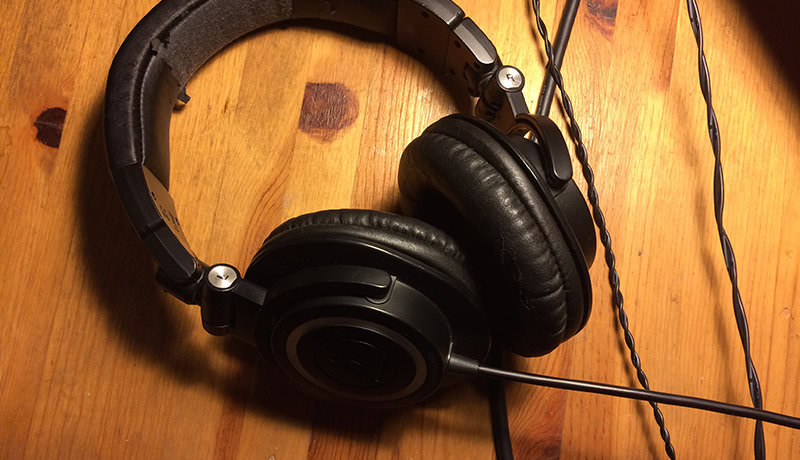


Audio Technica ATH-M50
I use these every single day. Lovely, warm and very cost-effective headphones with enough bass so that you don’t have to turn the sound up too much. I tried out a few other different brands and models, all more expensive than this, and I just found the sound to be much more natural on these. A very important part of the production process for me involves listening to the tracks on headphones and fine tuning all the little details.
Related
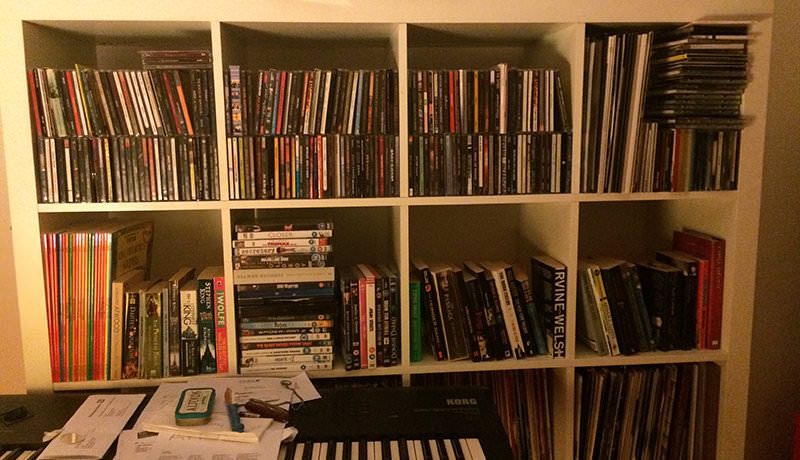


Shelves
On these shelves are a small portion of the albums, singles, books and movies that shaped my musical upbringing from my teenage years until now. Even though I buy everything digitally now, I wouldn’t get rid of them. In front is a Korg Wavestation, which comes in handy for depositing the contents of my pockets. Seriously, it’s a great synth but the VST version of it has all the same patches so I’ll probably sell it very soon.
Related
Chymera’s The Divided Self
EP is out now on Ovum. Find him on Facebook
and SoundCloud
.
Related
18th March, 2016
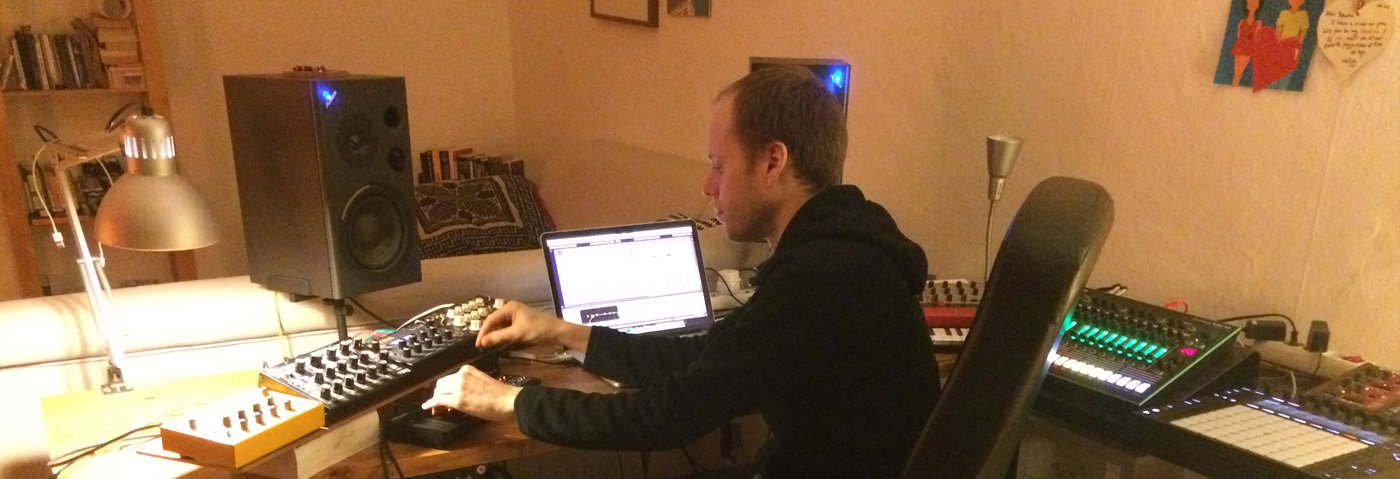
06.59 AM
Nice chapter. Very deep “My Studio” review this time and the best section of the website ever 😉
06.16 PM
Good one this time. I saw this video showing some of his workflow…. https://www.youtube.com/watch?v=aqefXVFOuTI